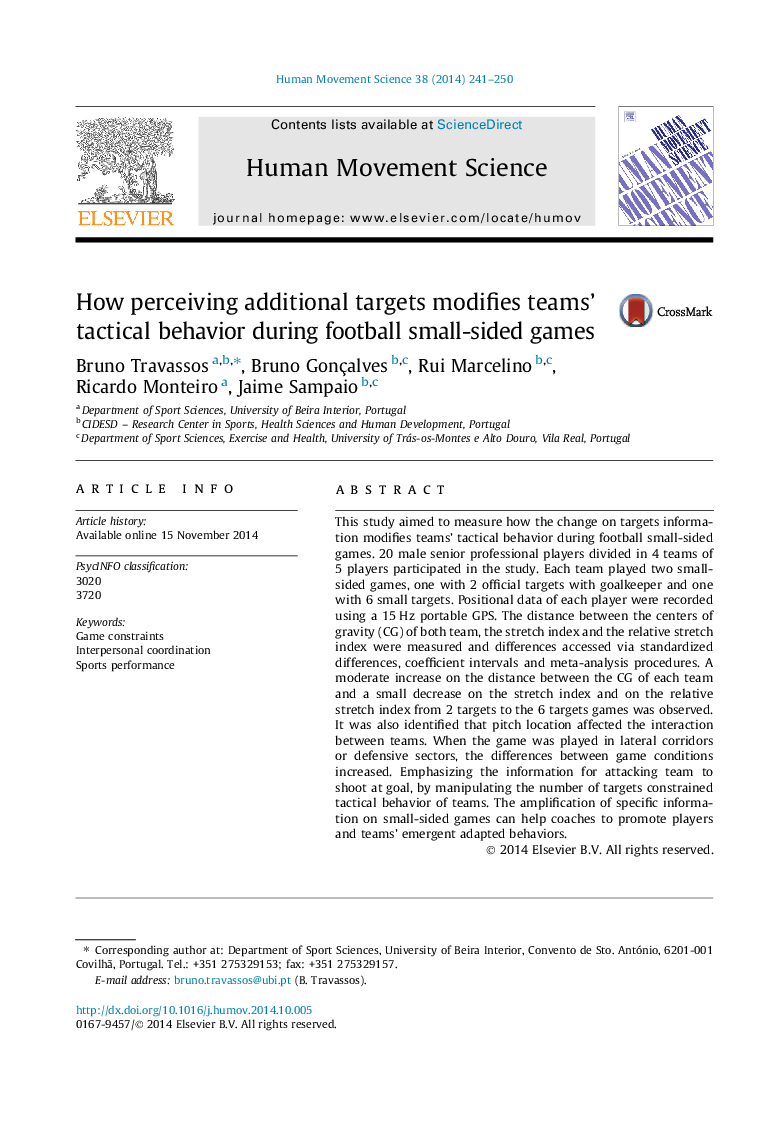| Article ID | Journal | Published Year | Pages | File Type |
|---|---|---|---|---|
| 7292364 | Human Movement Science | 2014 | 10 Pages |
Abstract
This study aimed to measure how the change on targets information modifies teams' tactical behavior during football small-sided games. 20 male senior professional players divided in 4 teams of 5 players participated in the study. Each team played two small-sided games, one with 2 official targets with goalkeeper and one with 6 small targets. Positional data of each player were recorded using a 15Â Hz portable GPS. The distance between the centers of gravity (CG) of both team, the stretch index and the relative stretch index were measured and differences accessed via standardized differences, coefficient intervals and meta-analysis procedures. A moderate increase on the distance between the CG of each team and a small decrease on the stretch index and on the relative stretch index from 2 targets to the 6 targets games was observed. It was also identified that pitch location affected the interaction between teams. When the game was played in lateral corridors or defensive sectors, the differences between game conditions increased. Emphasizing the information for attacking team to shoot at goal, by manipulating the number of targets constrained tactical behavior of teams. The amplification of specific information on small-sided games can help coaches to promote players and teams' emergent adapted behaviors.
Related Topics
Life Sciences
Neuroscience
Cognitive Neuroscience
Authors
Bruno Travassos, Bruno Gonçalves, Rui Marcelino, Ricardo Monteiro, Jaime Sampaio,
